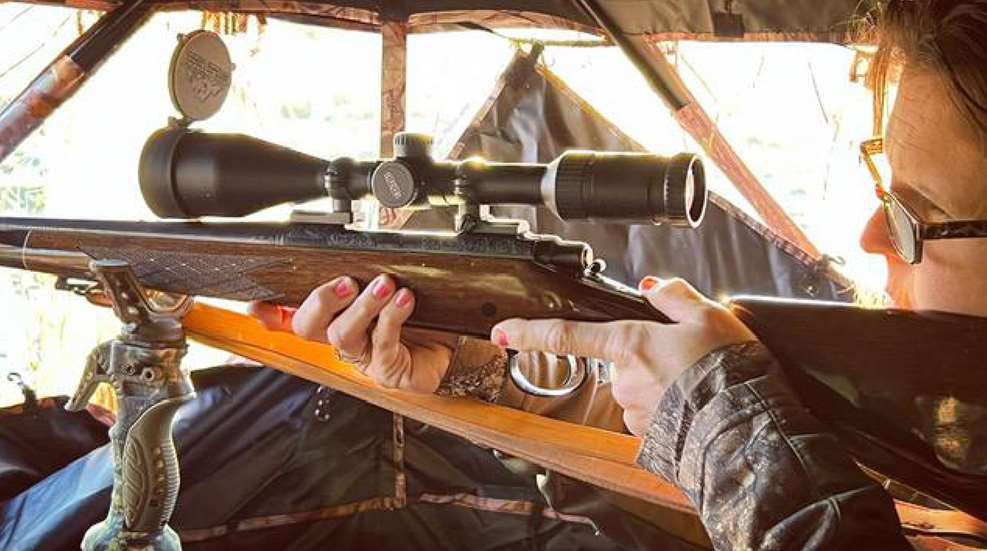Understanding Terminal Performance
We hear this term bantered about a lot when it comes to ammunition. But what exactly does it mean, and how does it affect your success in the field or for self-defense?
by HEIDI LYN RAO posted on August 10, 2023
NEWS, LIFESTYLE, TIPS & TACTICS, CONCEALED CARRY, HUNTING, GEAR, FIREARMS
Support NRA Women DONATE

Understanding Terminal Performance – NRA Women.com
Terminal performance is how a bullet or other projectile reacts, and the ability of it to stop a human threat or take down an animal. In other words, hunters rate a bullet’s terminal performance in how quickly a projectile kills game animals. Soldiers, law enforcement officers and responsible citizens in self-defense situations rate terminal performance on how quickly a projectile neutralizes a threat. It all relates to how deeply a bullet penetrates to reach the vital organs and cause tissue damage.
Terminal performance is often referred to as “knock-down” or “stopping” power. It is not whether the bullet kills, but how quickly and consistently. Terminal performance has a lot to do with bullet design and the ballistics of the cartridge.
Target shooters are not as concerned with terminal performance as they are in punching holes in paper. They are looking for consistent bullet placement in a tight grouping where they are aiming. Those who use a gun for hunting, and those who carry a gun to defend freedom–like our soldiers, men and women in blue, or citizens who carry for personal protection–are concerned with the terminal performance of a bullet. Remember, if you use a firearm, you have the potential to use deadly force. Using a firearm should be your last resort if you have no other option and it is either you or the assailant. Stopping a threat, whether human or animal, is done in two ways: by causing severe damage to the vascular system and interrupting or stopping the flow of oxygenated blood to the brain; or causing severe damage to the central nervous system in the brain or cerebellum.
There are three things that a bullet needs for terminal performance: bullet expansion, bullet penetration and bullet velocity. All three are related to bullet design and all must work in concert to get the required performance.
Bullet Expansion
Bullet design dictates the expansion, or lack of expansion, that causes tissue damage and wound cavity in an assailant or a game animal. This is called cavitation. There are two types of cavitation–permanent and temporary.
Permanent cavitation is the tearing and displacement of tissue as well as the breaking and splintering of bone. If this permanent cavitation passes through vital organs, especially the heart or brain, death occurs very quickly. Permanent cavitation through major blood vessels such as arteries also leads to a quick death by major blood loss. For self-defense training, this is the reason we train individuals to shoot center mass. There is more of a chance to hit the vital organs.
Temporary expansion is the secondary way terminal performance neutralizes a threat or helps a hunter collect his or her trophy game animal. Temporary expansion can be described as what it would look like if you dropped a rock into a bucket of water. If you gently ease the rock into the water, the water is less disturbed than if you throw it hard and with speed into the bucket. They both make ripples, but the one thrown harder makes move waves. In both examples the water eventually returns to its regular position. This represents what the soft tissue does when disturbed by a bullet.
Soft tissue is more liquid than a solid because it is composed mostly of water. Soft tissue is very elastic, so when the projectile passes through, it creates a crater or cavitation. This stretches the tissue to its breaking point before it snaps back close to its original shape.
Bullet Penetration
The type of bullet has a lot to do with penetration. Solids and hard cast bullets are designed for deep penetration. Expanding bullets are designed for creating a wide wound channel. A jacketed bullet with a thin outer covering fragments as it passes through soft tissue and bonded bullets hold together. Rapidly expanding bullets produce a wider wound channel, but the mushrooming projectile produces a lot of drag so it requires more momentum to reach the vital organs.
It does not matter the type of bullet if it reaches the vital organs. A bullet’s sectional density is directly related to the amount of damage it can cause. Sectional density is the bullet’s weight in pounds divided by its diameter squared. According to Hornady Ammunition, the larger the sectional density of a bullet, the deeper the penetration.
Bullet Velocity
Bullet velocity is the third factor of terminal performance. Velocity is what sends the bullet to its intended target and gives the projectile the energy to perform as it is intended. Lighter bullets tend to have a higher muzzle velocity than heavier bullets. The same is true with magnum revolver rounds.
Even though velocity is needed for terminal performance, it is important to remember that faster is not always better. Bullets are designed to have a minimum and maximum muzzle velocity and anything out of that range can affect the performance. The faster a bullet travels the more drag there is which can cause it to fragment before it performs as it was intended. This happens because soft tissue cannot get out of the way fast enough. It is like stepping into a pool versus doing a belly flop from a high diving board. The harder and faster you hit the water, the more it hurts.
Too little velocity also affects the terminal performance of a bullet. That is why it is important to purchase a rifle with a recoil that you can handle. Some individuals buy a large caliber rifle that produces too much recoil for them to handle. But even cartridges handloaded down to lower velocities can result in a wounded animal because the bullet does not perform properly.
Terminal performance is very important to hunters. I conduct many youth, women and adult mentored hunts every year and it seems that I have tried just about every type of ammunition on the market today for a successful hunt. I have settled on the Hornady CX (Copper alloy eXpanding) bullet because the deer taken on these hunts go down quickly. Hornady describes this Monolithic Copper Alloy Bullet as a “one-piece copper alloy that won’t separate and delivers devastating terminal performance, deep penetration, and 95% weight retention.”
You need to find a cartridge that does what you need it to do for the activity you are doing. If a tight grouping is more important to you than terminal performance, then choose a cartridge that is known for this quality. If you are looking for a quick, clean, and ethical kill then choose one that has a reputation for good terminal performance.
